Like many parents before me, I sob whenever I read this book to my kid
 Photo by Oisin Conolly on Unsplash
Photo by Oisin Conolly on Unsplash
The other night, my four-year-old son approached me with Shel Silverstein?s classic picture book The Giving Tree. I didn?t even know we had a copy, but I certainly recalled the book from childhood.
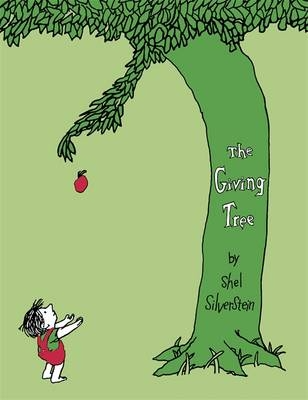
I began reading aloud, and, a third of the way in, the book ambushed me: I choked up, teetering on the verge of outright weeping. Certain phrases wrenched me inside. I could barely get through the book, needing to stop several times to gather myself (while pretending to admire the illustrations, of course). It was an intense, ineffable feeling: not quite sadness, certainly not joy, but not even nostalgia ? something deeper.
A Google search revealed that adults commonly cry when reading The Giving Tree aloud, and they?re often not entirely sure why. Chrissy Teigen, always newsworthy, once tweeted about her emotional reaction to the book:
And this fellow on reddit shared a similar experience:
At face value, the story is about a tree?s sacrifice for the love of a boy. At first, they happily play together every day, but eventually the boy grows up and pursues the trappings of adulthood: money, a house, a family, travel. So the tree gives the boy her apples to sell, her branches to build a house, and her trunk to make a boat. By the end, the tree is a stump, but the boy ? now a tired old man ? needs nothing more than a quiet place to rest, so he sits on the tree and the tree is happy. The end.
Readers have debated the book?s meaning since its publication in 1964, with the primary disagreement captured by the title of a New York Times Sunday Book Review from 2014: ?The Giving Tree: Tender Story of Unconditional Love or Disturbing Tale of Selfishness?? Variously interpreted as a picture of parental love, of divine love, of abusive relationships, or even of environmental rapacity, the book sharply divides readers.
Here?s what?s fascinating: the book deeply moves adults, regardless of whether they view it as extolling the tree?s unconditional love or lamenting the tree?s self-destructive love.
What is going on here?
What lends The Giving Tree its remarkable poignancy is not the tree?s love, but the story?s canvas ? the passing of time. In ten minutes, we witness the boy?s journey from childhood through old age, with all the loss and longing that accompanies life.
The book opens with scenes of childhood happiness. The boy plays with the tree every day: running, climbing, swinging, pretending. They are happy.
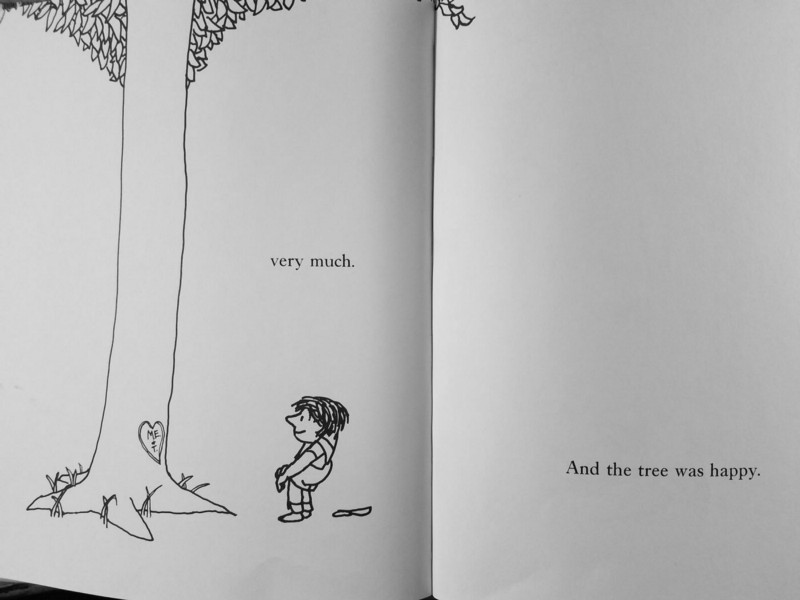
This is a verdant picture of wholeness: shalom.
But every good story thrives on conflict, and that is exactly what we encounter when we turn the page.
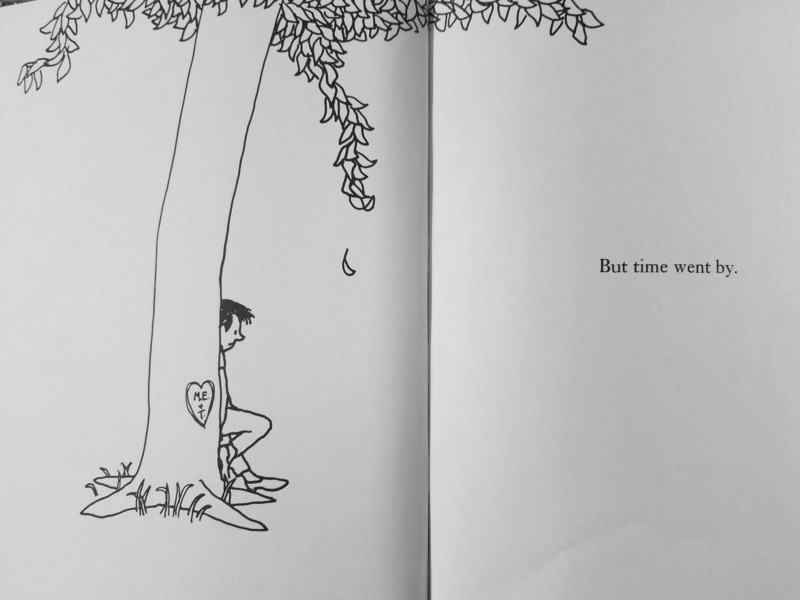
?But time went by.? With only a hint of the boyhood smile remaining on his face, the boy nostalgically remembers his happy childhood days with the tree.
As he continues to age, the boy no longer plays with the tree. Three times the tree entreats the boy to come and play ?and be happy? ? hearkening back to their lost childhood days ? but the boy is ?too big,? or ?too busy,? or ?too old and sad.?

Time has taken the boy?s childhood joy, and he can never go back to find it once more.
With loss comes longing.
This evokes not simply the loss of childhood happiness, but a primordial sense of everything time takes from us: youth, innocence, illusions, hopes, dreams, love. Conceptually, this is paradise lost: exile from Eden, the far-off place of shalom where we can find wholeness ?and be happy? in the fullest sense, if only we could get back.
With loss comes longing. The boy, despite forsaking the tree for possessions and family, always returns to it. For in that place the memory of wholeness lingers, forever engraved in the tree?s base.
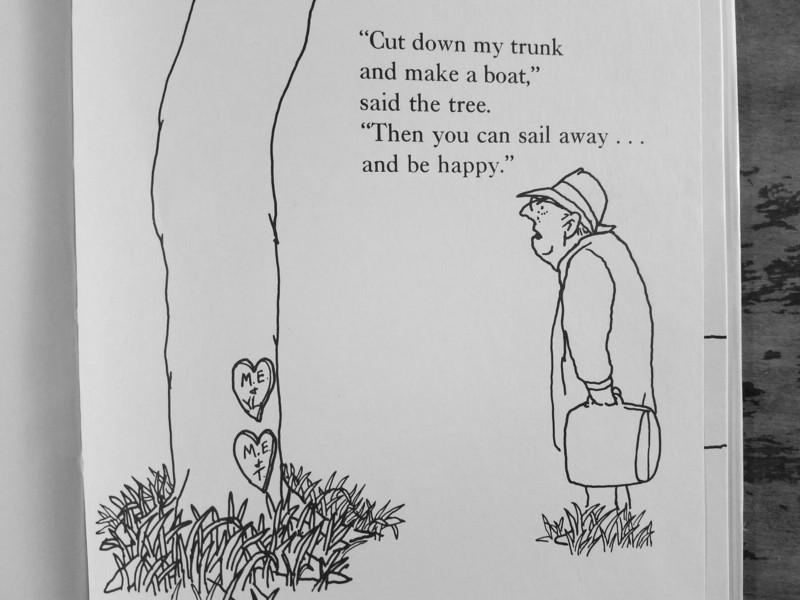
But it is the tree who longs most for what was lost, and it is here ? at the intersection of time?s passing and the tree?s love ? that the story is most powerful. Every time the aging boy returns, the tree gives at great cost to fulfill the boy?s desires, aching to regain Eden for him: ?Then you can?be happy,? as happy as when the boy played among the branches long ago.
But they cannot go back. The boy returns each time to the tree, dissatisfied and desiring more, until he grows ?too old and sad to play.? The book ends with a shadow of Eden: the boy and the tree together again, but ravaged by time.

As Silverstein wrote, ?It has a pretty sad ending.? To live is to age, and thus to lose and to long.
In a love from long ago, a grade school friendship, images from a mostly forgotten holiday, a song cherished in high school, a first kiss, your child?s baby pictures, or a childhood memory of playing on a summer afternoon: we bittersweetly hold the memory, mourn the loss, and yearn for a restoration even more complete. Time takes these joys from us and leaves a deep longing.
This nostalgic yearning is Sehnsucht, the rich German concept C.S. Lewis described as the ?inconsolable longing for we know not what.? It is ?our lifelong nostalgia, our longing to be reunited with something in the universe from which we now feel cut off.?
In Lewis? view, while this longing often springs from childhood memories or things of beauty, those are mere stand-ins. Ultimately, we desire ?something that has never actually appeared in our experience.? Lewis identified this as our ?far-off country,? the home to which we have never been.
When we see the aging boy?s loss of his childhood happiness and the tree?s longing to regain it, we encounter the loss intrinsic to life and we long for the place where wholeness awaits. We are both the boy and the tree.
Against this backdrop the tree?s love gains its heft. Into this cosmic void the tree pours that love; selfless, tragic, perhaps futile, but beautiful. This is a love across time and space to unwind time and dispel the deepest darkness ? an epic love yearning to bring us home to our country, where endless days of running and playing await.
I wrote at the outset of this article that I didn?t know where our copy of The Giving Tree came from, but I actually learned upon cracking open the book:
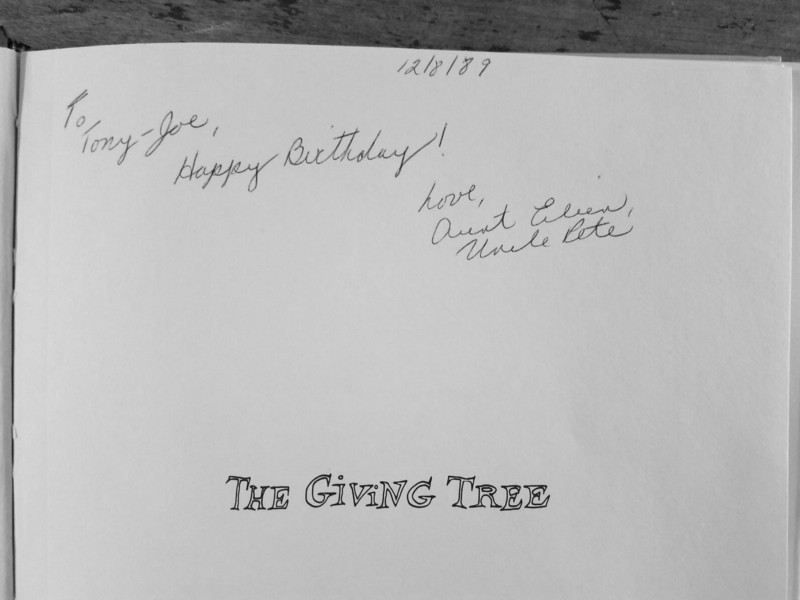
The book was a childhood gift to me from our neighbors of long ago, who we affectionately called ?aunt? and ?uncle.? (My mother, unbeknownst to me, at some point placed the book in my home.) The inscription stirred distant memories of reading the book in my childhood bedroom.
We?re too old to play, and the tree we remember is gone.
Which brings me to the crux of it: for those of us who fondly remember reading The Giving Tree as a child, that memory itself stirs our longing. We now read the book to our children, as it was read to us before we knew the loss age brings, back when the story was about nothing more than a tree?s tender love.
In concert, the act of reading and the narrative itself evoke the unspeakable loss and longing time has wrought since we first read about the tree who loved a little boy. And we weep.
But we cannot go back. We?re too old to play, and the tree we remember is gone. Our days of wholeness lie not in the past, but in the future, in our far-off country.


